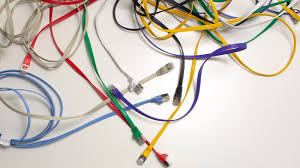A stable and strong network is essential for the success of any business. A reliable internet connection facilitates the smooth flow of communication and file sharing and enhances productivity. One of the components that help to create a solid network is the LAN cable. It may seem like a small and insignificant device, but the quality of the cable and LAN Cables Manufacturers you choose has a significant impact on your network’s performance.
In this blog post, we will explore the role of LAN cable in building a stronger network.
Factors to Consider
Bandwidth
The first factor to consider when choosing a LAN cable is bandwidth capability. Bandwidth refers to the amount of data that can be transmitted within a given period. The higher the bandwidth, the more data the cable can carry, hence better network performance. The most popular LAN cable types are CAT5, CAT6, and CAT7. CAT5, the oldest among them, has a bandwidth capacity of 100Mbps, whereas CAT6 can handle up to 10Gbps, ten times more than CAT5. CAT7 has the highest bandwidth capacity of up to 40Gbps.
Distance
The distance between your devices also plays a role in the performance of your network. To ensure a stable connection, you need a LAN cable that can transmit data over the required distance without signal degradation. The cable type varies in the distance they can effectively transmit data. CAT5e can cover up to 100m, CAT6 up to 150m, and CAT7 up to 1000m. It’s important to note that the distance covered may vary depending on factors such as cable quality, network equipment, and environmental factors.
Interference resistance
Your network may be subject to interference, which can affect the quality of the connection. The two most common sources of interference are electromagnetic interference (EMI) and radiofrequency interference (RFI). EMI arises from electronic equipment, and RFI comes from radio signals. The level of resistance to such interferences is another factor to consider when choosing a LAN cable. CAT5e has minimal resistance to interference, whereas CAT7 has a shielding system that makes it the most resistant to signal loss.
Cost
The cost of the LAN cable is also a consideration. It’s important to determine your network’s needs and balance them with the cost of the cable. Understandably, the cables with the best features come at a premium price. CAT7, the most superior among LAN cables, is more expensive than CAT5 and CAT6. However, choosing a cheaper cable may compromise your network’s performance in the long run, resulting in costly repairs and replacements.
Future-proofing
Lastly, it’s essential to consider future needs when choosing a LAN cable. An upgrade to your network may require more advanced cable features, such as higher bandwidth and increased resistance to interference. It’s, therefore, crucial to take this into account when selecting a cable type to future-proof your network.
Conclusion
A strong network is critical to the success of any business, and the LAN cable plays an essential role in achieving this. Understanding the cable’s features and choosing one that meets your network’s needs is vital for optimum performance. A cable with a high bandwidth capacity, resistant to interference, and can cover the needed distance is ideal. Future-proofing your network needs should also be a consideration when selecting a cable type. Ultimately, investing in a quality LAN cable is an investment in the stability and productivity of your network.
